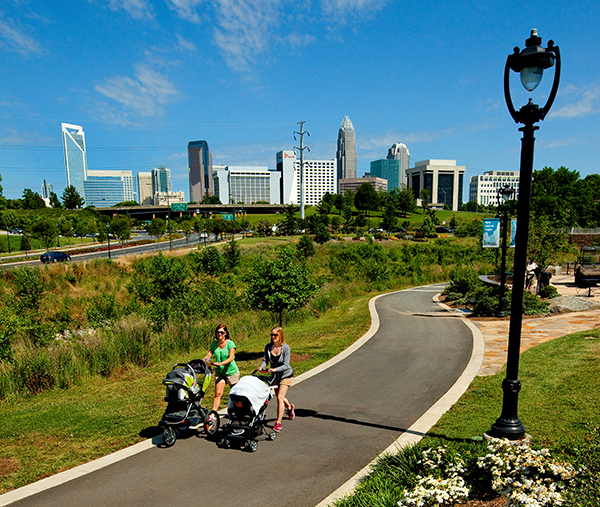Why greenways make Charlotte more sustainable

Photo from Charlotte Parent
Urban greenways are one of the best ways to provide outdoor greenspace in a developed area that allow for economic, social, and sustainable growth throughout a city. Greenways are “linear parks” that connect people to different places around a city, often used for recreation and conservation. Greenways provide transportation, recreation, fitness, and economic opportunity by providing a safe, alternate way for people to get to work, to the store, and anywhere else they might need to go. Improved public health, safer pedestrian access, and aesthetically pleasing green space – just to name a few – are among some of the many benefits of greenways.
Above all, greenways make a community more sustainable and equitable, which is at the core of Sustain Charlotte’s mission. Their eco-benefits include:
- Protect local wildlife, vegetation, and biodiversity
- Reduce traffic congestion and improve air quality by allowing people to walk and bike safely rather than driving
- Vegetation from greenways absorb large amounts of carbon dioxide
- Prevent floods and water damage to infrastructure
- Promote water quality of streams and rivers by trapping pollutants
- Education surrounding environmental awareness
- Maintains and contributes to Charlotte’s urban tree canopy
Greenways improve Charlotte’s sense of community, provide adequate outdoor space for residents, and attract business by supplying construction, tourism, and recreational jobs. The economic impact of a trail involves a combination of newly created jobs and the expansion of existing businesses related to travel, equipment, clothes, food, souvenirs and maps. Charlotte is lucky to have over 49 miles (and counting!) of greenways, despite constant urban development around the city. At Sustain Charlotte, we advocate for all types of sustainable transportation methods, including safe and accessible bike paths and walkways. Through our partnership with Greenways for Mecklenburg, we are requesting that the Mecklenburg County Board of County Commissioners take appropriate actions to complete 150 miles of a connected greenway network to be constructed by 2030, and an entire 200-mile system by 2035. Although our goals may be ambitious, greenways are a vital part of Charlotte’s sustainable growth.
Thanks for reading!
As a nonprofit, community support is essential for us to keep doing what we do — including providing free articles like this. If you found this article helpful, please consider supporting Sustain Charlotte.
Want to stay in the loop? Subscribe to our weekly newsletter and follow us on Instagram, Facebook, and Twitter.
